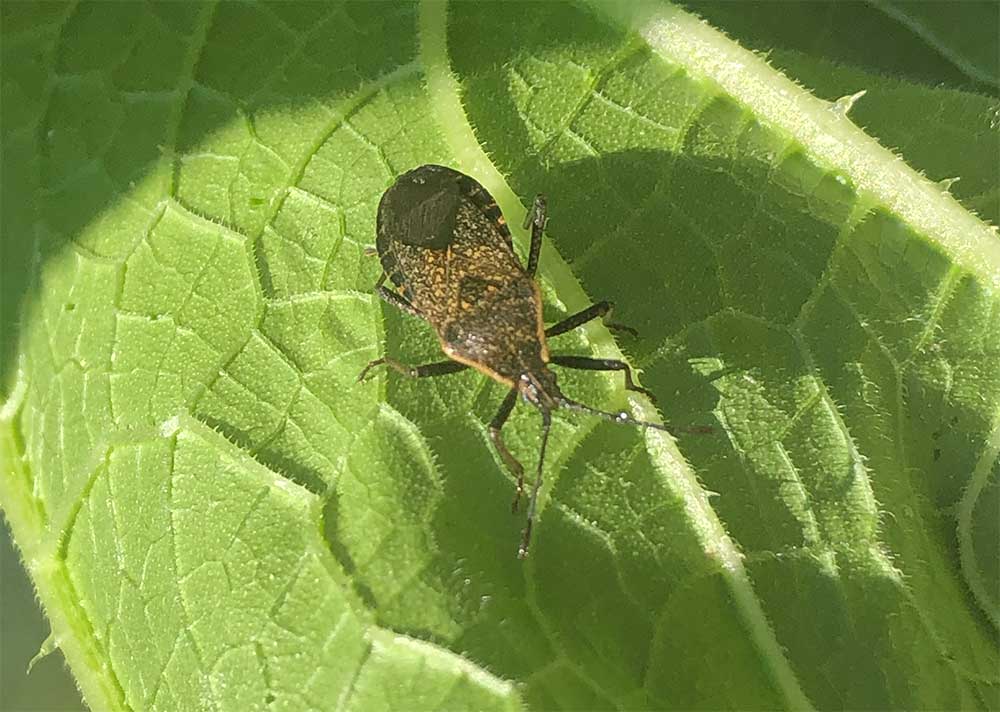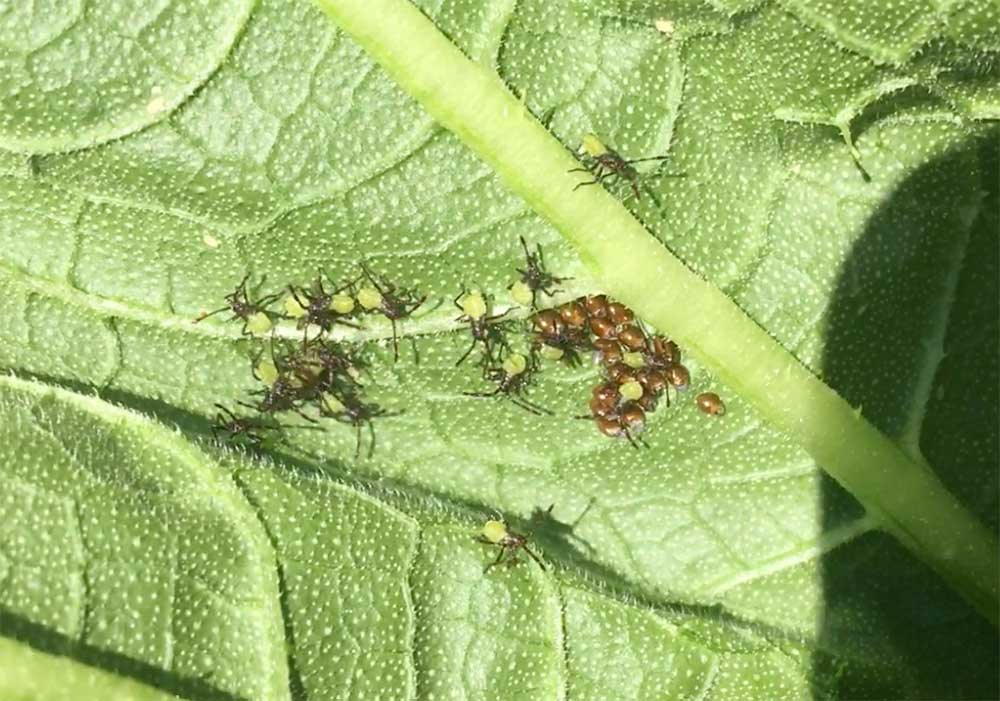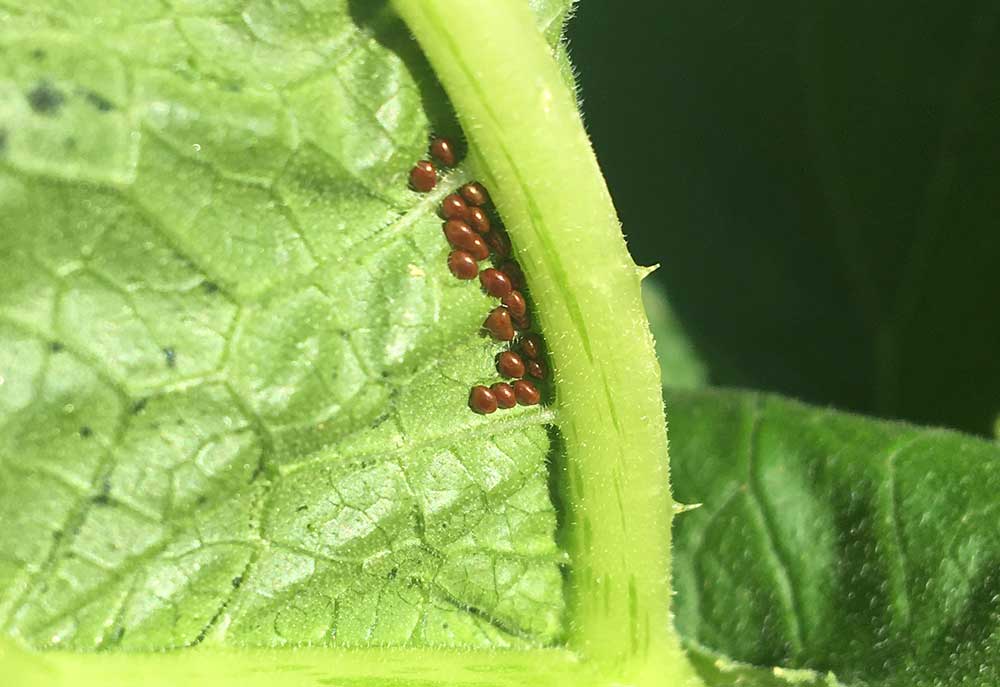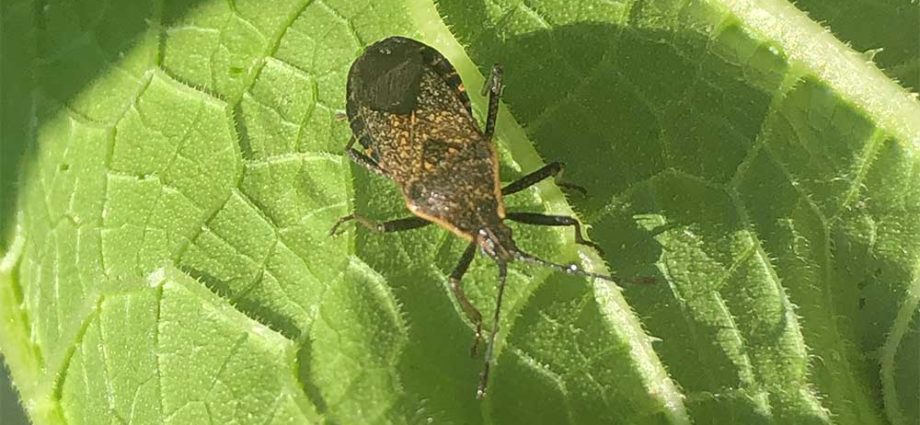Squash is often a prolific addition to a home vegetable garden. But even the most productive plant can be sidelined by squash bugs. The aptly named insect loves squash plants and is particularly fond of summer squashes like zucchini, yellow squash, and crookneck squash. You may also find them on pumpkins, cucumbers, and melons. Adult squash bugs are hard to kill and they can devastate young plants. This article covers everything you need to know about controlling and preventing squash bug infestations in your garden.
How to Kill Squash Bugs & Remove their Eggs
For a quick overview, check out this video:
For in-depth information on identifying and getting rid of squash bugs, read on:
Contents
How to Identify Squash Bugs
There are three signs that you have a squash bug infestation in your garden:
- 1. A yellowing of the leaves of your squash plant, which leads to the leaves turning brown, withering, and dying. (This can be an indication of other problems, so you’ll want to look for evidence of the other signs).
- 2. Adult or nymph squash bugs crawling up the stems of your squash plants when you water.
- 3. Clusters of brown/bronze eggs on the underside of leaves.

Squash bugs look very similar to stink bugs, however, a squash bug is less wide and has an ovular shaped body. Adult squash bugs (pictured above) are over 1/2 inch long with a brown body. Before they are fully grown, young squash bugs are gray in color (below). While they can fly, you will mostly see them crawling on your squash plant.

Squash bug nymphs are much smaller and hang out in groups. They hatch with green bodies and black legs (below), eventually growing into a gray body. You’ll usually find them on the underside of leaves.

Squash bugs feed on the plants by injecting a toxin that allows them to suck out the sap. This will manifest in yellow spots on the leaves. Occasionally you will see ragged holes on the leaves as well. Eventually, the leaves will wilt and turn brown, finally drying up because of a lack of nutrients. The wilting looks similar to bacterial wilt, so look for squash bugs or eggs to confirm the cause.
Once you identify squash bugs or eggs in your garden, you should take action immediately to keep the infestation under control. Adults are hard to kill. Small plants and seedlings can quickly be decimated by squash bugs, while a midsummer infestation on a mature plant is easier to overcome.
How to Get Rid of Squash Bugs
Completely eradicating a squash bug infestation is very difficult, especially if you don’t catch it early.
Insecticides aren’t very effective on adult squash bugs and really only work on newly hatched nymphs, so egg removal and manual removal of adolescent and adult squash bugs is the most effective control method.
To kill squash bugs, fill a bucket with water and a little liquid dish soap. Go into your garden in the morning and water the squash plant thoroughly. This will encourage the squash bugs to crawl up the plant away from the water. The adults are easy to grab (wear garden gloves if you’re squeamish). You can then drop them in the bucket.
If you find a cluster of nymphs on the back of a leaf, place the bucket under the leaf and shake or knock the nymphs into the water. Once all of the squash bugs are dead, you can pour the water out in your yard.
You should check for squash bugs daily and remove any that you see. I do this each morning after I water.
Another technique to try if you have a bigger infestation is to put down boards or cardboard in your garden at night. The adults and nymphs will gather under the board. In the morning, either toss the bugs in a bucket of soapy water or mash them between two boards.
Once fall comes, removing squash bugs is less urgent. Freezing temperatures kill nymphs and adults will disperse to find somewhere sheltered to overwinter. Make sure to remove your squash plants at the end of the season to discourage overwintering in your garden bed.
How to Remove Squash Bug Eggs

If you’ve found adult or nymph squash bugs on your plants, then there’s a good chance there are eggs as well. You want to remove those eggs to prevent further infestation of your garden. Once a week, check underneath all of the leaves on your squash plants. The eggs take about 10 days to hatch, so a weekly check should be enough to catch them. You’re looking for clusters of brownish bronze orbs that nicely stand out against the green leaves. Female squash bugs usually lay them in the V shape formed by the leaf veins.
Once you’ve found the eggs you can:
- Squish them with your fingers.
- Use a tool like a butter knife to scrape the eggs off the leave. You can let them fall on the ground where other bugs will eat them.
- Take a piece of packing tape and roll it into a tube on your fingers. Press it against the eggs until they’re all removed from the leaf. Throw the tape away.
Squash Bug Prevention
Prevention is so important when it comes to controlling squash bug infestations. Try out a few of these recommendations so you can spend less of your summer hunting for squash bugs:
- Use crop rotation in your garden beds.
- Wait to plant your squash seedlings until early summer.
- Keep your squash plants covered until they begin to flower. You will need to remove the cover to allow pollination, but it will help prevent a spring infestation.
- Consider companion planting your squash with tansy and nasturtium, which will help repel squash bugs.
- Don’t use straw or hay to mulch your squash plants. Squash bugs love to hang out in this type of mulch.
- In the fall, clear your garden completely of squash vines and leaves. This will prevent squash bugs from overwintering in your garden debris.

Once you’ve got your squash bugs under control, try out these delicious zucchini squash recipes.
Dealing with more pests in your garden? Learn how to get rid of flea beetles.
